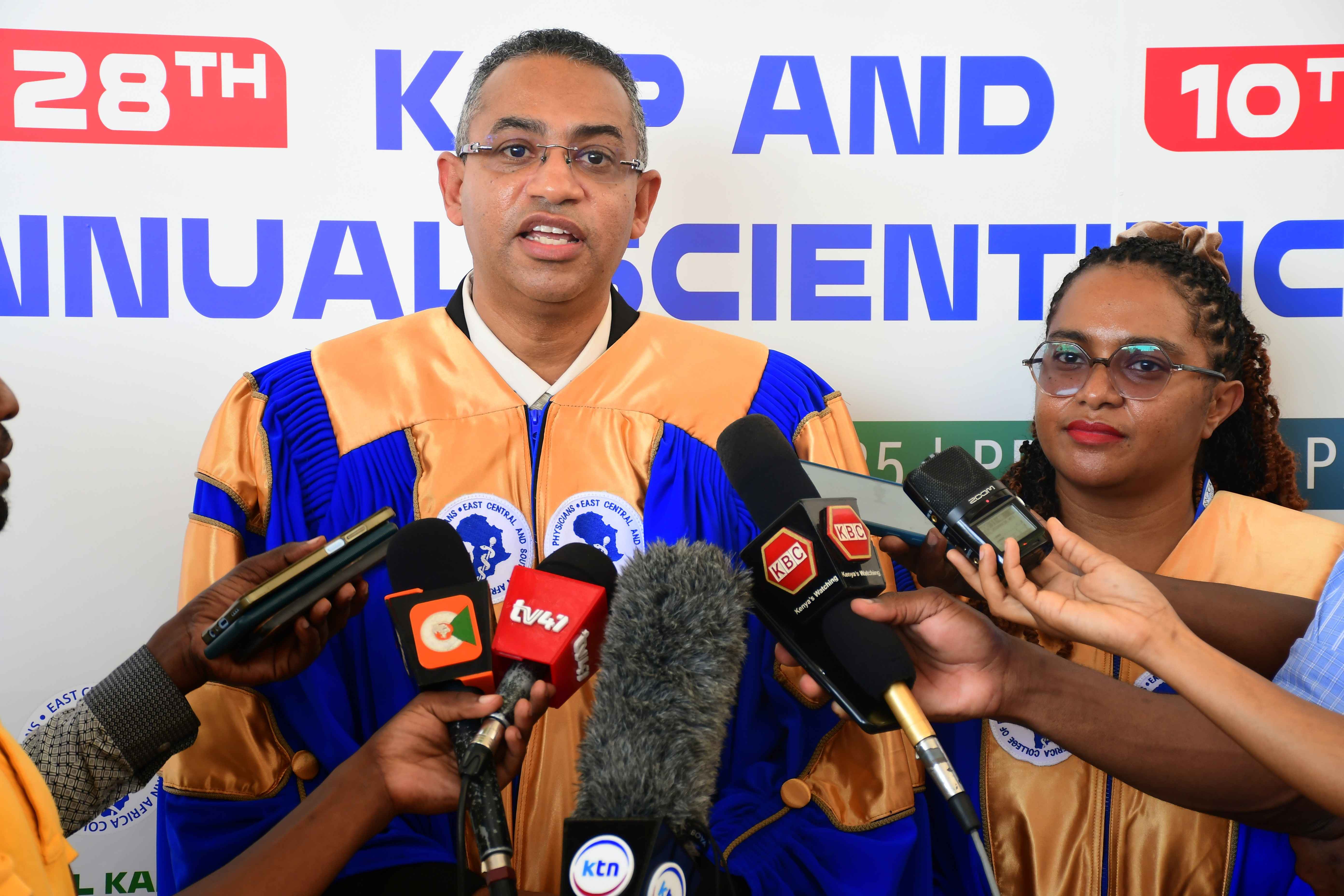
 The 15 graduates from the ECSACOP program on
Thursday / BRIAN OTIENO
The 15 graduates from the ECSACOP program on
Thursday / BRIAN OTIENO
Physicians have urged the national and county governments to support the East, Central and Southern Africa College of Physicians (ECSACOP) programme.
ECSACOP is a regional college comprising Kenya, Uganda, Tanzania, Malawi, Zambia and Zimbabwe, which seeks to tackle the shortage of internal medicine specialists.
Internal medicine is the medical specialty focused on the non-surgical diagnosis and treatment of diseases affecting adults, from their young adulthood through old age.
“Our population in Kenya is roughly 52 million. If you divide 52 million by 400, you will get that people somewhere are suffering,” ECSACOP chief examiner Sood Mohamed said.
He said the programme will churn out more specialist physicians who will be at the consultant level, consequently able to address the poor physician-patient ratio.
 ECSACOP chief examiner Sood Mohamed in Mombasa on
Thursday / BRIAN OTIENO
ECSACOP chief examiner Sood Mohamed in Mombasa on
Thursday / BRIAN OTIENO
The shortage of internal medicine specialists puts
pressure on families who have to dig deeper into their pockets to get medical
services owing to the scarcity of specialists.
While the World Health Organization recommends a
physician-patient ratio of 1:1000, Kenya’s ratio is approximately 1:130,000.
It gets worse when it comes to the region.
The six countries have a population of approximately
250 million people, with only about 1,000 internal medicine specialists.
This translates to a ratio of one physician to
250,000 people, against WHO’s recommendation.
ECSACOP was officially inaugurated in 2015 with
training of postgraduate doctors starting in 2018.
The programme provides standardised
internal medicine postgraduate training through an in-service, apprenticeship
model.
It involves a
competency-based, spiral curriculum delivered in accredited healthcare facilities
and prepares physicians to meet regional health needs, with training sites
inspected and accredited by ECSACOP.
Mohamed, a consultant nephrologist, said
most of the doctors taken into the programme already work in county hospitals.
This means the counties get to retain their
doctors, saving the much needed funds that would have otherwise been used to
hire alternative doctors had the doctors gone for training elsewhere.
It is imperative to note that the few physicians
in the ECSACOP region practice mainly in urban areas.
The ethos of ECSACOP is to train physicians close
to where they reside, discouraging the migration of young doctors seeking
training in traditional urban-based universities.
These usually do not return to practice in their
rural areas.
Mohamed said this also helps keep the wage bill of
counties down.
“If a doctor at Coast General Teaching and
Referral Hospital wants to further their studies, ECSACOP provides for that
training while the doctor is still at the hospital unlike in the normal
university where they would have had to move away from Mombasa for their four
year-course,” Mohamed explained.
Should the doctor have opted say the University of
Nairobi, Mombasa county would have been forced hire another doctor while still
paying the one on further studies.
“That is why we have partnered with the Royal
College of Physicians London who support us in capacity building, logistics,
and money,” Mohamed said.
The Kenya Association of Physicians president
Erick Njenga said the program is also cheaper than the universities that offer
medicine.
Students pay Sh100,000 per year for a four-year
program.
Professor Omondi Oyoo, from the University of
Nairobi, said they are looking forward to seeing support from the government “because
the physicians train at facilities where they work”.
“Counties also need to support the program because
the people will be training where they usually work so they do not have to move
away,” Oyoo said.
KAP Nairobi branch chair Rosslyn Ngugi, who is
also the President of Kenya Diabetes Study Group, said Kenya has allowed an extra
college so there can be an increase in the number of physicians.
“To the Kenyan population, be assured that
wherever you are in the country we are training the general practitioners to be
physicians so that you do not have to travel to the main towns just to receive specialised
care,” Ngugi said.












